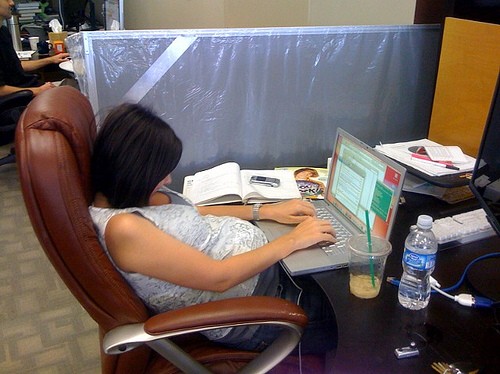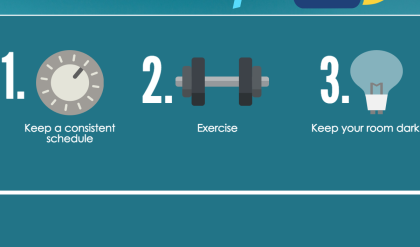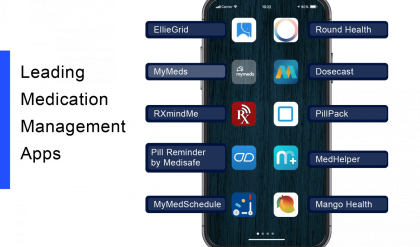
Conquer Your Desk Job: Simple Exercises to Combat Sedentary Lifestyle
The hum of the fluorescent lights, the gentle click-clack of the keyboard – the soundtrack of the modern office. But beneath the surface of productivity lies a silent threat: the sedentary lifestyle. Hours spent hunched over screens contribute to a myriad of health problems, from back pain and weight gain to cardiovascular disease and decreased energy levels. But fear not, desk warriors! You don’t need a gym membership or a personal trainer to fight back. This guide unveils simple, effective exercises you can incorporate into your workday to reclaim your health and vitality.
The Silent Enemy: Understanding Sedentary Behavior
Before we dive into the solutions, let’s understand the enemy. Sedentary behavior isn’t just about sitting; it’s about the prolonged lack of physical activity. This inactivity slows metabolism, weakens muscles, and strains joints. The consequences can be far-reaching, impacting both physical and mental well-being. But the good news? Even small changes can make a significant difference.
Desk-Friendly Fitness: Your Office Workout
Forget those grueling gym sessions – your office can become your personal fitness haven. These exercises require minimal space and equipment, making them perfect for the workday warrior.
1. The Chair Squats: Your Glutes Will Thank You
This deceptively simple exercise targets your glutes and legs, combating the muscle atrophy caused by prolonged sitting.
- How to: Sit upright in your chair, feet flat on the floor. Slowly stand up, engaging your core and glutes. Lower yourself back down slowly. Repeat 10-15 times.
2. The Desk Push-Ups: A Chest and Tricep Booster
Engage your upper body with this adaptable exercise, easily modified for all fitness levels.
- How to: Place your hands shoulder-width apart on the edge of your desk. Lower your chest towards the desk, keeping your back straight. Push back up to the starting position. Repeat 8-12 times. (Modify by leaning against the wall for an easier variation.)
3. The Neck Rolls: Stress Relief and Flexibility
Combat the stiffness that comes with hours spent looking down at screens.
- How to: Gently roll your head clockwise in a circular motion, then counterclockwise. Repeat 5-10 times in each direction.
4. The Wrist Stretches: Carpal Tunnel Prevention
Protect your wrists from the repetitive strain of typing.
- How to: Extend one arm forward, palm facing down. Gently bend your wrist upwards, using your other hand to gently press it down. Hold for 15 seconds. Repeat with the other wrist. Then, repeat with your palm facing up, bending your wrist downwards.
5. The Walking Breaks: The Ultimate Office Escape
The simplest and often most effective exercise. Walking is your ally in battling sedentary behavior.
- How to: Set reminders every hour to stand up and walk around for 5-10 minutes. Take the stairs instead of the elevator. Walk to a colleague’s desk instead of emailing.
Beyond the Basics: Advanced Office Exercises
Once you’ve mastered the basics, consider adding these more advanced exercises to your routine:
- Standing Desk Work: Invest in a standing desk or use a stack of books to elevate your workspace.
- Resistance Bands: Incorporate resistance band exercises for added strength training.
- Yoga/Pilates: Short yoga or Pilates sessions can improve flexibility, posture, and reduce stress.
The Power of Consistency: Making it a Habit
The key to success lies in consistency. Start small, incorporating one or two exercises into your daily routine. Gradually increase the intensity and frequency as you feel more comfortable. Remember, even small changes can make a big difference in your overall health and well-being.
Schedule Optimization: Your Personal Fitness Plan
| Time | Activity | Duration | Benefits |
|---|---|---|---|
| 9:00 AM | Neck Rolls & Wrist Stretches | 5 mins | Improved flexibility, reduced tension |
| 11:00 AM | Chair Squats | 3 mins | Leg & glute activation |
| 1:00 PM | Walking Break | 10 mins | Increased circulation, energy boost |
| 3:00 PM | Desk Push-Ups | 5 mins | Upper body strength |
| End of Day | Stretching | 5 mins | Relaxation and stress reduction |
By integrating these simple yet effective exercises into your daily routine, you can transform your workspace from a sedentary trap into a personal fitness sanctuary. Conquer your desk job, and reclaim your health, one exercise at a time.

Additional Information
Beyond the Basics: A Deeper Dive into Combating Sedentary Desk Jobs
The premise of “Conquer Your Desk Job: Simple Exercises to Combat Sedentary Lifestyle” is crucial given the pervasive nature of sedentary work. However, a deeper analysis requires examining not just what exercises to do, but why they are effective and how to implement them sustainably within the constraints of a typical workday. This analysis will explore the physiological, psychological, and practical challenges of combating sedentary behavior and offer solutions beyond simple exercises.
I. The Physiological Impact of Prolonged Sitting:
The immediate impact of prolonged sitting is reduced calorie expenditure, contributing significantly to weight gain and associated metabolic disorders. Studies consistently link sedentary behavior to increased risks of:
- Cardiovascular disease: A meta-analysis published in the Annals of Internal Medicine (2012) showed a strong association between prolonged sitting and increased risk of cardiovascular mortality, independent of physical activity levels. This highlights that even regular exercise may not fully negate the negative effects of prolonged sitting.
- Type 2 diabetes: Reduced insulin sensitivity and impaired glucose metabolism are linked to prolonged sitting, increasing the risk of developing type 2 diabetes. The mechanism involves decreased lipoprotein lipase activity and reduced muscle glucose uptake.
- Certain Cancers: Research suggests a correlation between prolonged sitting and increased risk of several cancers, including colon, endometrial, and lung cancers. The exact mechanisms are still under investigation but likely involve hormonal imbalances and chronic inflammation.
- Musculoskeletal disorders: Prolonged static postures lead to muscle imbalances, stiffness, and increased risk of back pain, neck pain, and carpal tunnel syndrome.
II. Beyond the “Simple Exercises”: A Holistic Approach
While simple exercises like stretches, desk-based strength training, and short walking breaks are beneficial, a truly effective strategy requires a multi-faceted approach:
- Ergonomics: Proper workstation setup is paramount. This includes adjustable chairs, monitor placement at eye level, keyboard and mouse positioning to minimize strain, and adequate lighting. Ignoring ergonomics renders even the best exercise regime less effective.
- Microbreaks: Instead of focusing solely on longer exercise blocks, incorporating frequent, short microbreaks (e.g., standing up every 30 minutes, doing a quick stretch) throughout the day is crucial for disrupting prolonged sitting.
- Active Commuting: Choosing active commuting options like walking, cycling, or using public transport significantly increases daily physical activity and counters the negative effects of prolonged sitting.
- Mindfulness and Posture: Conscious awareness of posture and body position throughout the workday can prevent the development of postural issues and promote better overall health. Mindfulness techniques can aid in maintaining good posture and reducing stress, which often contributes to poor posture.
- Workplace Culture: Encouraging a culture of movement within the workplace through team activities, standing meetings, and walking meetings is critical for sustainable change.
III. Case Study: The Impact of Workplace Interventions
Numerous case studies demonstrate the effectiveness of comprehensive interventions. For example, studies involving workplace wellness programs incorporating ergonomic improvements, physical activity initiatives, and educational sessions have shown significant reductions in musculoskeletal disorders, improved employee productivity, and decreased healthcare costs. These interventions emphasize the importance of a holistic approach, going beyond simple exercises to create a supportive environment that promotes health and well-being.
IV. Future Directions & Conclusion:
Further research is needed to explore the optimal frequency, duration, and intensity of interventions, considering individual factors like age, health status, and job demands. The development of personalized strategies based on individual risk profiles and workplace characteristics is crucial for maximizing the effectiveness of combating sedentary behaviour. In conclusion, while simple exercises are a valuable component, a sustainable strategy necessitates a holistic approach that addresses ergonomic factors, promotes regular microbreaks, encourages active commuting, and cultivates a supportive workplace culture. Only then can the full potential of combating the detrimental effects of a sedentary desk job be realised.






